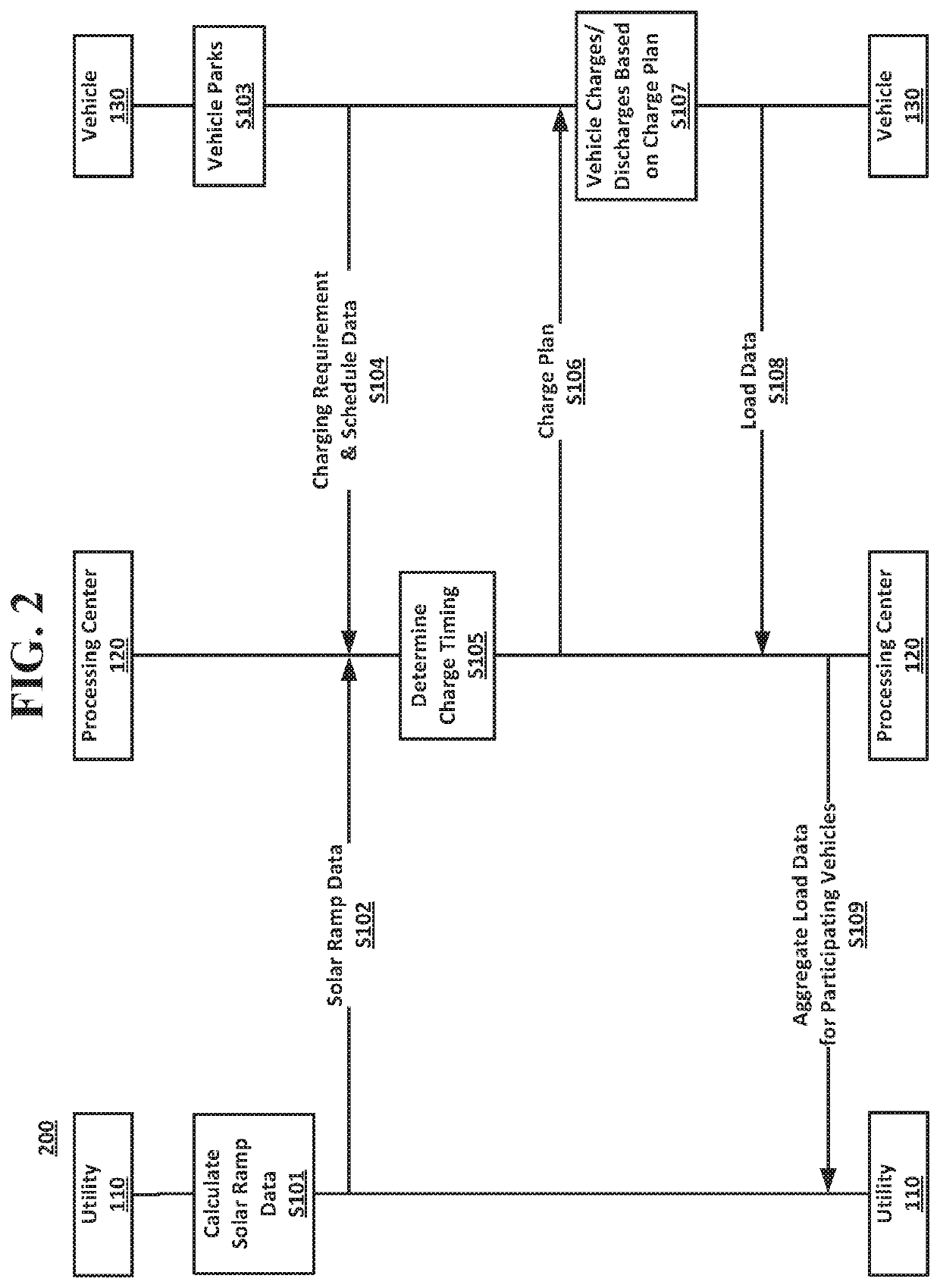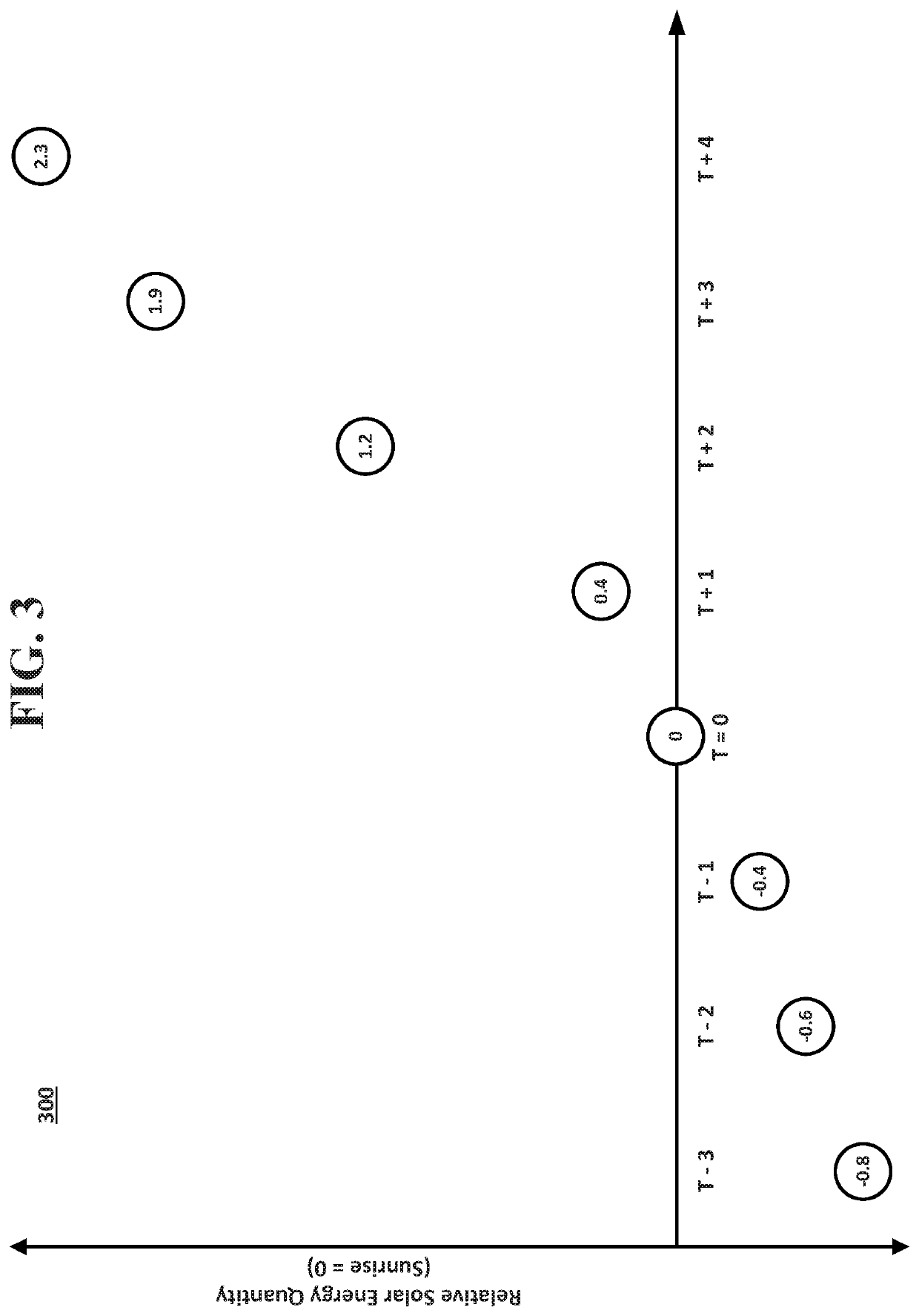Managing the Charging of a Fleet of Vehicles to Align with a Renewable Energy Supply Curve for an Electric Grid
a technology for renewable energy supply and electric grid, applied in the direction of electric vehicle charging technology, charging stations, transportation and packaging, etc., can solve the problems of increasing the number of vehicles that are not easily controlled, creating new consumption patterns, and generally time- and/or weather-dependent energy output from renewable energy sources
- Summary
- Abstract
- Description
- Claims
- Application Information
AI Technical Summary
Benefits of technology
Problems solved by technology
Method used
Image
Examples
Embodiment Construction
[0011]Renewable energy sources may complicate the act of balancing the grid both because of their generally variable output timing and the limited controllability of the output capacity. In the case of solar energy, for example, increasing levels of energy output when the sun rises may necessitate grid operators to find a correspondingly increasing level of demand. Where consumer demand does not coincide with the increasing supply, grid operators may address this issue in a variety of ways. For example, grid operators may direct the surplus solar energy to a stationary energy storage device, such as a battery, which may come with significant costs. Grid operators may curtail solar energy generation by disconnecting or deactivating solar panels, which may be an inefficient use of the solar panel infrastructure. Similarly inefficient, grid operators may artificially create electrical demand by needlessly activating electrical loads where possible. Grid operators may also respond to in...
PUM
 Login to View More
Login to View More Abstract
Description
Claims
Application Information
 Login to View More
Login to View More - R&D
- Intellectual Property
- Life Sciences
- Materials
- Tech Scout
- Unparalleled Data Quality
- Higher Quality Content
- 60% Fewer Hallucinations
Browse by: Latest US Patents, China's latest patents, Technical Efficacy Thesaurus, Application Domain, Technology Topic, Popular Technical Reports.
© 2025 PatSnap. All rights reserved.Legal|Privacy policy|Modern Slavery Act Transparency Statement|Sitemap|About US| Contact US: help@patsnap.com



